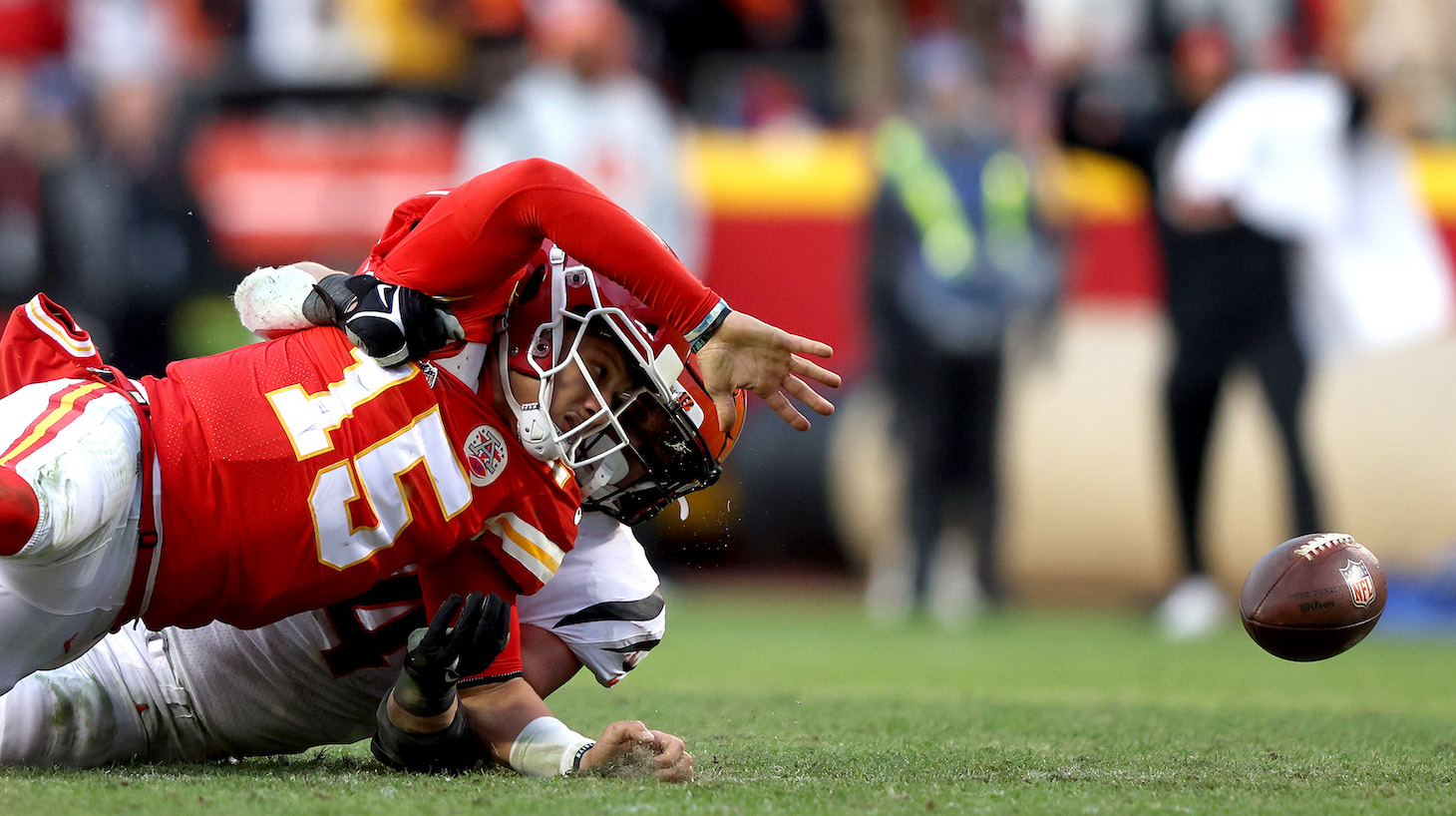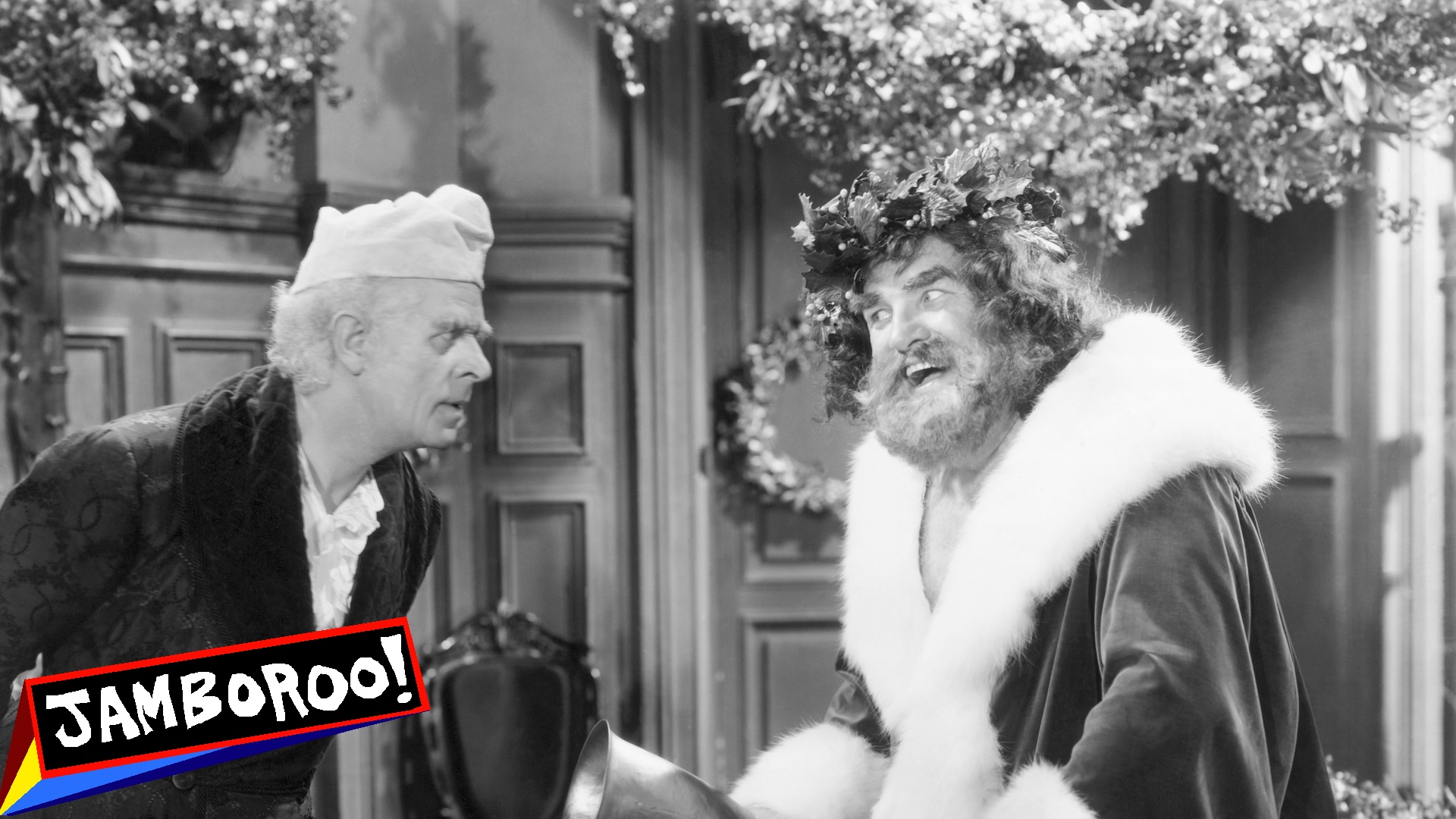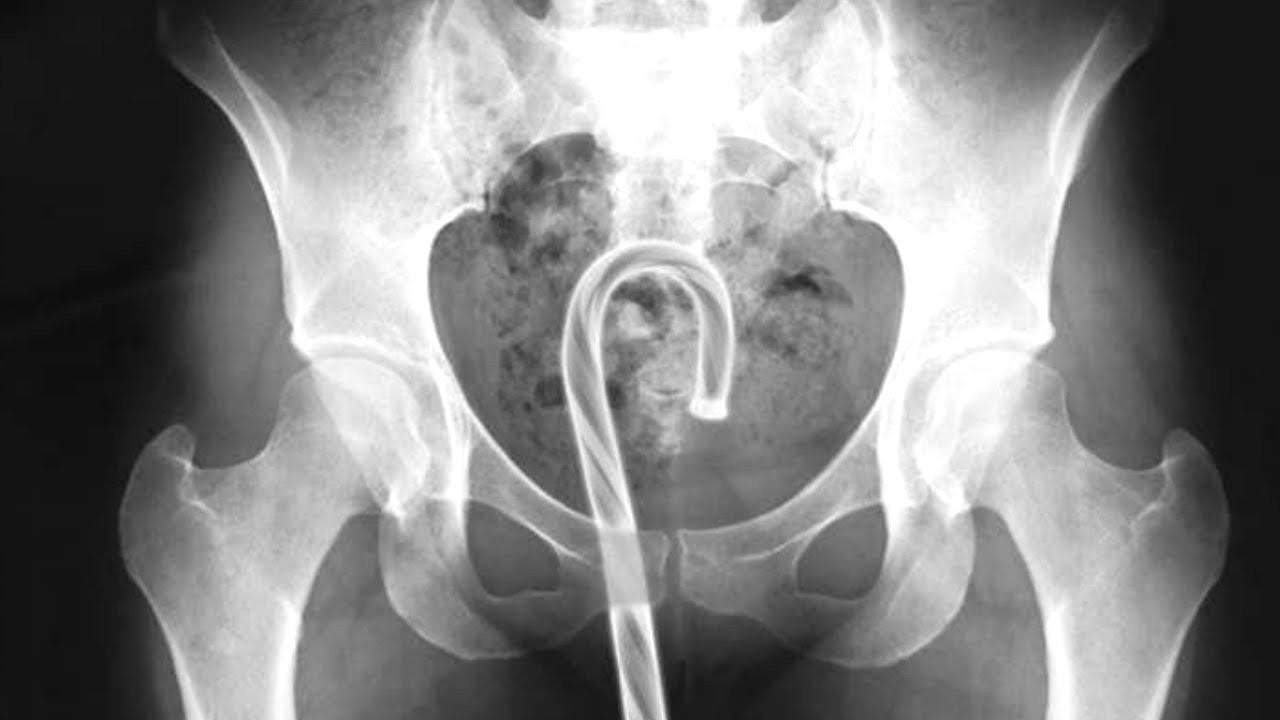Momentum carries over, until it doesn't. For the first four drives of the AFC Championship game, the Chiefs looked like they hadn't gotten the memo that the Bills game was over; they started just as insuppressibly as they finished against Buffalo last week. Their first half consisted of three straight touchdown drives led by Patrick Mahomes, dicing up the defense like a Wagyu chef with the Bengals looking as pliant as the tenderest meat, and a fourth thwarted only by halftime and a throwback-bad playcall by Andy Reid. Those points left on the table didn't seem like they'd matter. What's seven when you're down 11 and can't stop Mahomes at all?
Those seven mattered, as did the seven Cincinnati had snagged on the penultimate drive of the half, because—and there's no clearer or more accurate way to put this—they stopped Mahomes. Stopped him cold! Turned him into Mike Glennon, with his first-half 98.0 QBR dropping like a stone to 1.4 in the second half and overtime. After running rampant for just shy of four drives, after halftime the Chiefs went punt, punt, pick, punt, punt, FG, pick. It's how a game that was once 21-3 K.C. turns into a 27-24 Bengals victory, and it's the only possible way that happens. Sometimes it's tempting to complexify the causes of the unlikely, because we figure it couldn't be as simple as it looked. But no: The Bengals are heading to the Super Bowl because they shut down Mahomes. It's as simple as that.
Precisely how they did that is less simple, and a matter for the All-22. But Mahomes himself admitted the Bengals' D didn't present any radically new tricks—or at least nothing he hasn't seen before.
"They just had a spy on me, for the most part, and I've usually done a good job getting around that guy, but they had a good game plan," Mahomes said of what the Bengals did differently in the second half. "They were doing a lot of similar stuff in the first half, we were just executing at a higher level. They stayed with it."
Remember the QB spy Mahomes brought up; it'll be important later. (Chekhov's Spy?) But the glaring change defensive coordinator Lou Anarumo made in the locker room was to drop more men in coverage—eight or more players on nearly half of the second-half snaps. This had the effect of cutting off the deep ball, or at least forcing Mahomes to risk throwing into double coverage, where bad things can happen, as did on his overtime interception.
Putting more men in coverage obviously carries the risk of bringing less pressure on Mahomes, but given his wheels, it may make sense; he's not really going to be contained by more guys. How many big plays has he broken by evading a pass rush until a receiver gets open downfield? If you can't stop the first half of that equation with any size rush, use your personnel in coverage, where they might actually do some good.
And it did the Bengals a ton of good. According to the NFL's Next Gen Stats, Cincinnati used eight or more players in pass coverage on 45 percent of pass plays in the second half and overtime, compared to just 25 percent in the first half. Mahomes's numbers against eight-plus in coverage? A downright woeful 7-of-13 passing for 59 yards, one interception, and two sacks.
One side effect/necessity of dropping eight men in coverage is that the QB spy—if you choose to use one, and Mahomes's scrambling ability practically demands it—can't be the traditional linebacker. The Bengals' spy, who floats near the line of scrimmage in hopes of containing the quarterback in the pocket, was most often one of their more mobile defensive ends. This not only discouraged Mahomes from climbing the pocket and taking off, but it also cut him off from his favorite release valve, a quick ball either underneath to a tight end or to a running back in the flat.
The combination of the heavy coverage and the spy gave Mahomes fits all afternoon. On this fourth-quarter sack, when his pocket collapses there's nowhere to go—a DE is hovering right over the middle, and the only receiver even close to open is well-covered and well short of the first-down marker.
TREY HENDRICKSON
— PFF CIN Bengals (@PFF_Bengals) January 30, 2022
WHAT A SIGNINGpic.twitter.com/BJ8p5Vk3CX
Compare and contrast with the penultimate play of regulation, when Mahomes had all the time in the world. Again, everyone's covered—and the notion of a quick throw to Travis Kelce on a crossing route is cut off by the looming threat of DE Sam Hubbard as the spy—and Mahomes dances, hoping something will open up. Nothing does, for a comically long time; a tribute to Cincinnati's DBs. Eventually, with nothing left to spy on, it's Hubbard that charges through to force the strip-sack.
Essa jogada aqui… Creed Humprey salvando os Chiefs! 😳 #ChiefsKingdom pic.twitter.com/quAnd79bqo
— NFL Brasil (@NFLBrasil) January 30, 2022
It's that play, I think, that pays the highest tribute to this Bengals defense. They must have been tired as hell by that point in the game, just as Buffalo's visibly was at the same point last week, but no amount of time for Mahomes was enough for them to allow a receiver to get even just open-ish enough for him to think about throwing the ball. Then, with only the length of the coin toss to rest, they kept it going in overtime, forcing two incompletions and a pick. They did repeatedly what the Bills could not do in the endgame; they made stops, and they're going to the Super Bowl because of it.
Stopping Mahomes is not as easy as dropping more men into pass coverage; if it were, every team would do it. It takes smart, fit players to pull it off, and calls tailored to their abilities. (It also takes a lack of adjustments from the Chiefs offense, perhaps in the form of more screen passes and designed runs. "No, not really," Andy Reid said when asked if Cincinnati presented a different defensive look in the second half. "I can put the players in better position to make plays, and I didn't get that part done.") But this proved the perfect match of scheme and personnel. What happened to Patrick Mahomes? The Bengals happened.







